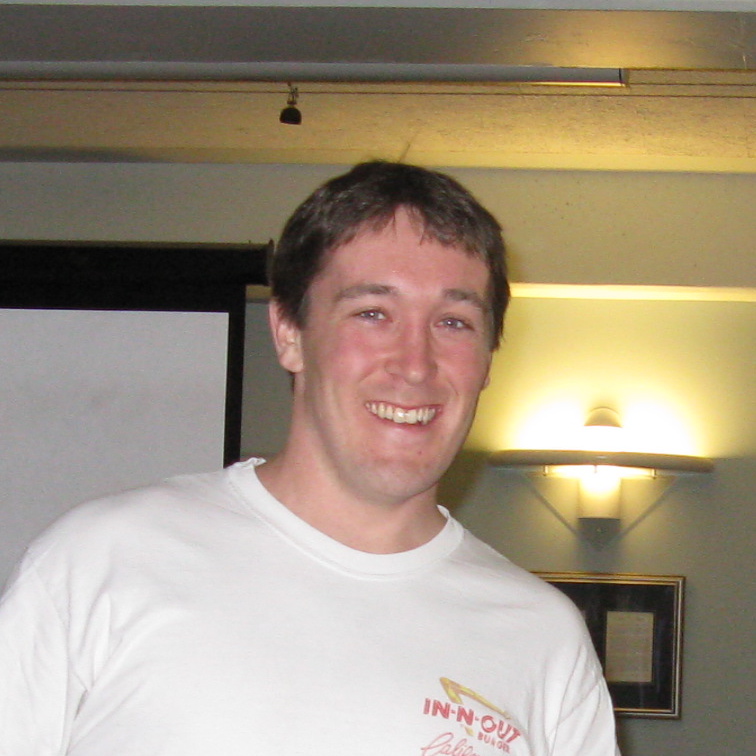Isolation of cancer cell cytotoxic compounds from marine cyanobacteria
Kevin Tidgewell
Appointment Period: 2008-2010 / Grant Year: [25,25]
 My research focuses on the discovery of potential anticancer natural products from marine cyanobacteria, with our assays focusing on the major solid tumor types, including lung, colon and breast cancers. Indeed, the current mainstay of cancer chemotherapy is cytotoxic drug therapy, and many of these agents derive from natural products. The focus of our work is marine cyanobacteria, which are known to produce a wide array of compounds that possess cytotoxic properties towards human cancer cells.
My research focuses on the discovery of potential anticancer natural products from marine cyanobacteria, with our assays focusing on the major solid tumor types, including lung, colon and breast cancers. Indeed, the current mainstay of cancer chemotherapy is cytotoxic drug therapy, and many of these agents derive from natural products. The focus of our work is marine cyanobacteria, which are known to produce a wide array of compounds that possess cytotoxic properties towards human cancer cells.
While being supported by this training grant, I have been involved in the extraction, isolation and structure elucidation of secondary metabolites from marine collections of cyanobacteria, especially those from Palmyra Atoll in the South Pacific. Following the Gerwick laboratory’s standard protocol for extraction and pre-fractionation of the extracts, bioassay-guided fractionation has been used to discover two novel cytotoxic compounds from a collection made at Palmyra Atoll. Three fractions of this extract showed activity in the human lung adenocarcinoma (H-460) cell cytotoxicity assay. Two active compounds have been purified from these fractions, and using mass spectrometric and 2D-NMR techniques, their structures were determined to be new analogues of the apratoxin family. These two new compounds, termed apratoxins F and G, display IC50 values of 2 nM and 14 nM, respectively, in the H-460 cell cytotoxicity assay, and thus constitute exciting and important new anticancer lead compounds. These compounds have recently been reported in a manuscript that has been accepted to ChemBioChem. In addition, a provisional patent has been filed and further in vivo animal studies are being conducted on the more active of the two compounds.
Additional cyanobacterial extracts have been screened and fractionated to discover highly active fractions, which are currently being purified so that structure elucidation efforts can determine those compounds responsible for activity. From one of these a highly cancer cell cytotoxic compound has been isolated and most of its structure has been determined from a rich set of spectroscopic data. The discovery of novel agents that are specifically cytotoxic to cancer cells are the mainstay of cancer chemotherapy, however, these discoveries can also lead to the discovery of new pharmacological tools that can be used to better understand cancer cell biology and to aid in the design of new therapies to combat cancer.
Tidgewell K, Groer CE, Harding WW, Lozama A, Schmidt M, Marquam A, Hiemstra J, Partilla JS, Dersch CM, Rothman RB, Bohn LM, Prisinzano TE. Herkinorin analogues with differential beta-arrestin-2 interactions. J Med Chem. (2008) 51:2421-31. PMID: 18380425; PMC2494883.
Tidgewell K, Engene N, Byrum T, Media J, Doi T, Valeriote FA, Gerwick WH. Evolved diversification of a modular natural product pathway: apratoxins F and G, two cytotoxic cyclic depsipeptides from a Palmyra collection of Lyngbya bouillonii. Chembiochem. (2010) 11:1458-66. PMID: 20512792.
Gutierrez M, Tidgewell K, Capson TL, Engene N, Almanza A, Schemies J, Jung M, Gerwick WH. Malyngolide dimer, a bioactive symmetric cyclodepside from the panamanian marine cyanobacterium Lyngbya majuscula. J Nat Prod. (2010) 73:709-11. PMID: 20158242; PMC2859090.
Balunas MJ, Linington RG, Tidgewell K, Fenner AM, Ureña LD, Togna GD, Kyle DE, Gerwick WH. Dragonamide E, a modified linear lipopeptide from Lyngbya majuscula with antileishmanial activity. J Nat Prod. (2010) 73:60-6. PMID: 20030365; PMC2834186.
 My research focuses on the discovery of potential anticancer natural products from marine cyanobacteria, with our assays focusing on the major solid tumor types, including lung, colon and breast cancers. Indeed, the current mainstay of cancer chemotherapy is cytotoxic drug therapy, and many of these agents derive from natural products. The focus of our work is marine cyanobacteria, which are known to produce a wide array of compounds that possess cytotoxic properties towards human cancer cells.
My research focuses on the discovery of potential anticancer natural products from marine cyanobacteria, with our assays focusing on the major solid tumor types, including lung, colon and breast cancers. Indeed, the current mainstay of cancer chemotherapy is cytotoxic drug therapy, and many of these agents derive from natural products. The focus of our work is marine cyanobacteria, which are known to produce a wide array of compounds that possess cytotoxic properties towards human cancer cells.